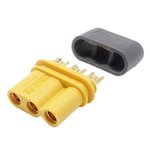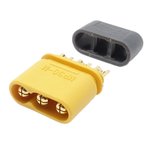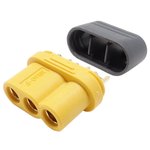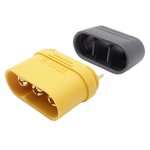Measuring thermal parameters empirically
In the last post, I gave an overview of what thermal metrics are relevant to motor drive applications and how they drive the important performance metrics of controllers and motors. In this post, I’m going to look at how to measure those thermal parameters empirically in at least a crude way, but with enough accuracy to be useful for practical design applications.
What do we want to measure?
There are a set of parameters that we would like to be able to measure that have some overlap between the controller and motor case. For both, we want to be able to measure:




